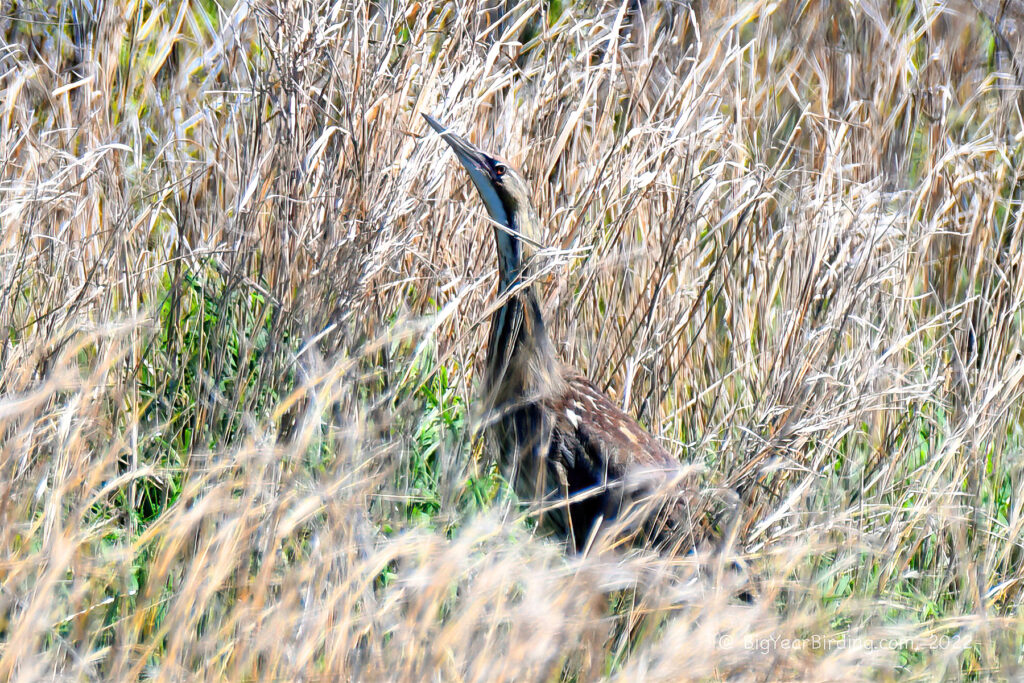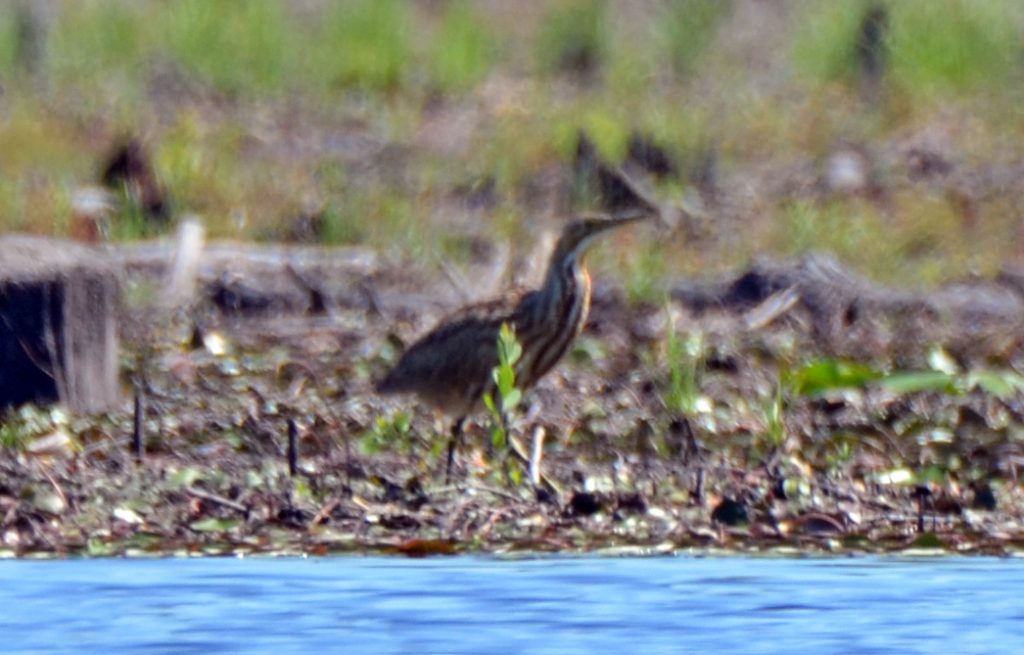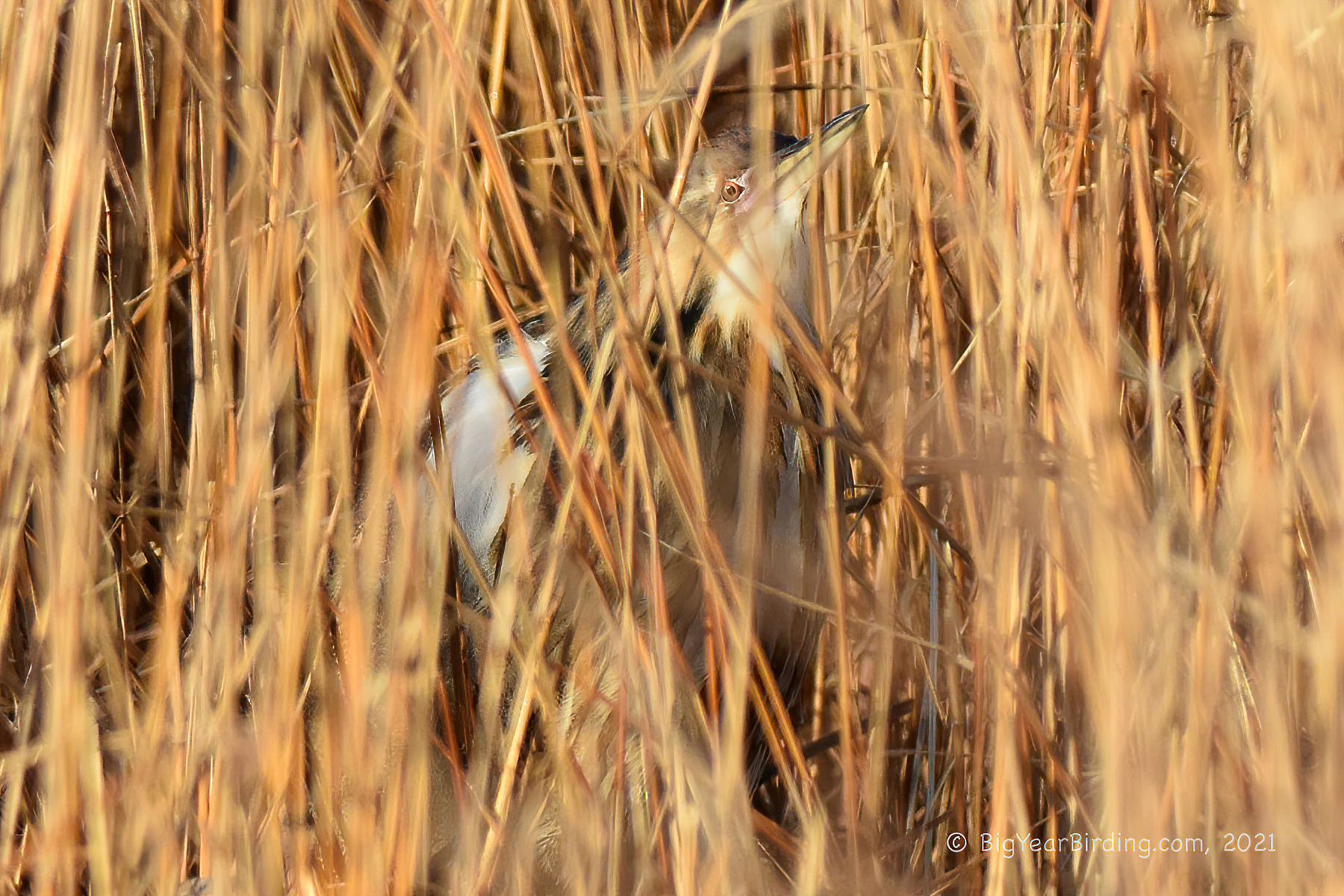The American Bittern (Botaurus lentiginosus) is a medium-sized heron that inhabits marshes and wetlands across North America. These birds can reach a length of up to 2.5 feet (76 cm) and have a wingspan of up to 4 feet (122 cm). American Bitterns typically weigh between 1.5 and 2 pounds (0.7 to 0.9 kg), with males being slightly larger than females.

The American Bittern is a master of camouflage and has a unique appearance that helps it blend in with its surroundings. The bird’s mottled brown and buff feathers resemble the reeds and cattails of the wetlands it calls home. Additionally, American Bitterns have a distinctive posture when they feel threatened – they stand with their bill pointed up towards the sky, which makes them look like a piece of reed or grass. This behavior, known as “stalking,” makes them difficult to spot in the marsh.
American Bitterns are migratory birds and can be found throughout North America during the breeding season. They typically arrive in their breeding grounds in late April or early May and depart in August or September. During the winter months, American Bitterns can be found in the southern United States, Mexico, and Central America.
In addition to their distinctive appearance and behavior, American Bitterns are also known for their unique call. The male’s call is a deep, resonant “oonk-a-lunk” that can be heard up to half a mile away. This call is used to attract females and establish territory.

Despite their impressive camouflage and unique call, American Bitterns face a number of threats. Wetland destruction and degradation, hunting, and collisions with cars and buildings are all major threats to this species. Conservation efforts such as wetland restoration and habitat protection are crucial for ensuring the continued survival of the American Bittern.


